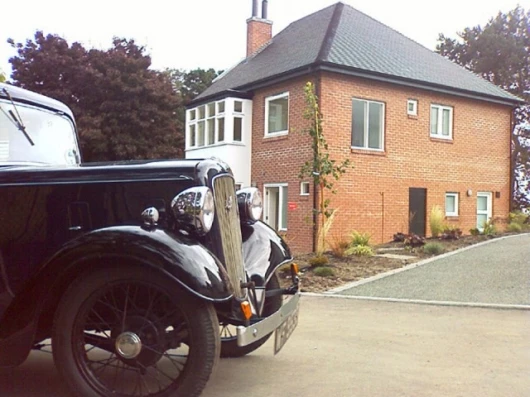October 21, 2008 Building environmentally friendly houses from the ground up is all well and good, but what about the existing energy inefficient houses most of us still live in? In 1930’s England three million semi-detached houses, or duplexes, were built and are still a major part the current housing stock. Now a three-year research project is about to start at The University of Nottingham that will help people living in these properties meet the Government’s ambitions to reduce CO2 emissions from homes. The joint project with the energy firm E.ON aims to learn energy efficiency lessons for the future from the failings of houses in the past.
Special planning permission was granted to build a 1930s style house (dubbed the E.ON 2016 in reference to the year in which the British Government is seeking carbon neutral status for all new homes) in the grounds of the University. The house bristles with more than 100 sensors to monitor energy use, temperature and humidity, making it one of the most sophisticated research houses in the world. This technology will help the project team to assess the benefits of low carbon technologies that can be fitted to existing homes, and how to make best use of natural resources such as the sun, wind and rain.
The original 1930s house was designed with open fires, single glazed windows, inefficient gas or electric water heating and no insulation. In the first year the E.ON 2016 House will be used as a typical 1930s semi, providing ‘starting point’ data relevant to the three million properties of the era. For the next two years the house will be lived in by Changhong Zhan, a research fellow at The School of Built Environment, and his wife and daughter. They will be taking part in one of the most comprehensive ‘big brother’ studies of its kind and will wear the latest tracking devices to provide data on their associated energy costs and emissions as well as understand how the living space is used and how it changes as the property is upgraded.
Houses are responsible for almost a third of the CO2 emitted in the UK, with 60% of that arising from heating and cooking using natural gas, and from electricity drawn from power stations for lighting and domestic appliances. With millions of people in the UK still living in energy inefficient housing – not to mention the world – any benefits identified could not only help reduce the bills of home owners, they could also reduce the carbon footprint of millions of people.
E.ON 2016 is on of six sustainable homes of different types that form the University’s Creative Energy Homes initiative.






